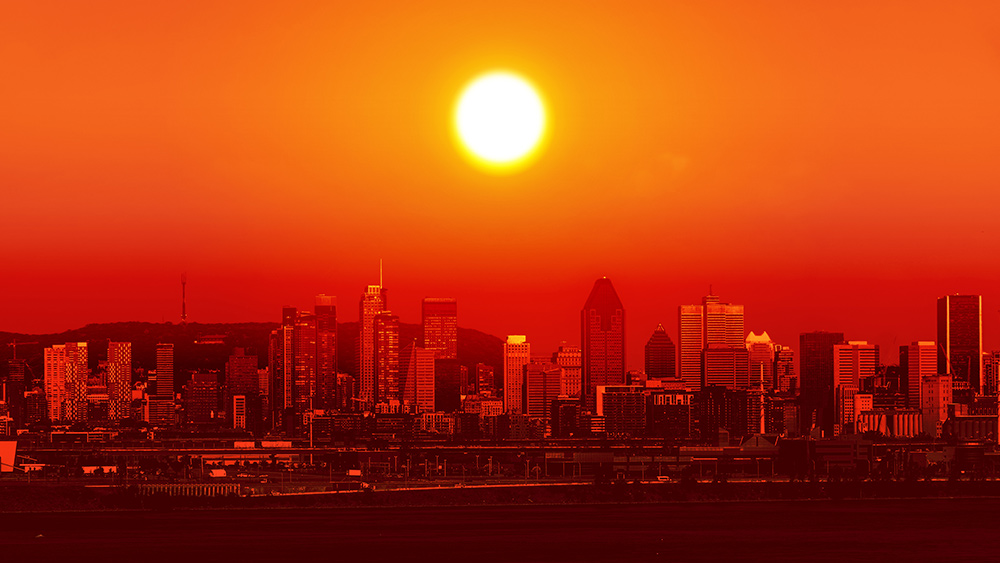World’s forests are in better shape than many people realize
02/12/2024 / By Cassie B.

Climate change alarmists are shouting from the rooftops that our planet is on the verge of plunging into a catastrophic collapse thanks to human activity, but once in a while, a voice of reason makes its way through all the noise. Case in point: a recent opinion piece in Bloomberg in which columnist David Fickling explains that the situation really isn’t as dire as some people want us to believe when it comes to the state of the planet’s forests.
The piece, aptly titled “The World’s Forests Are Doing Much Better Than We Think,” focuses on the fact that plenty of forests around the world are actually faring quite well. He notes that while the destruction of tropical forests attracts a lot of headlines, cooler climates are actually seeing great progress on this front.
For example, China’s forests have grown by 607,000 square kilometers since 1992, which is roughly equivalent to the size of Ukraine, while the EU has added woodlands equivalent to the size of Cambodia. Between India and the U.S., enough forests have been planted to cover Bangladesh.
England now has broader forest coverage than it did at any time in the past 700 years since the Black Death, with 1.33 million hectares of woodland. The UK currently boasts three times the amount of forest it had when the 20th century began, Fickling notes.
The trend he observed is backed up by data from the World Resources Institute, who reports that 130.9 million hectares of land added tree cover in the two decades leading to 2020, which amounts to an area bigger than Peru. A total of 36 countries have actually gained more tree cover than they’ve lost during that time, including Poland, Ireland, the Netherlands and Denmark, along with Pakistan, India and Bangladesh.
They also note that some tree growth may not show up in studies that use satellite technology to detect trees as they must be at least 5 meters high to be visible.
Deforestation continues in Amazon while forests grow elsewhere in the world
Deforestation does continue to be a problem, particularly in the Amazon rainforest. As Europe enhanced its forest cover dramatically during the last two generations, the Amazon is believed to have lost as much as 20 percent of its mass. In Brazil alone, enough woodland has been eradicated since 1992 to counter all of the growth seen in the U.S., EU and China combined.
Fickling notes that the recovery of polar and temperate forests might not be sufficient for offsetting global warming on their own, but he says the phenomenon does prove that it is possible to reverse the damage that deforestation is causing to some degree.
He also notes that fossil fuels helped take some of the pressure off the demand for wood, writing: “Indeed, in much of the world, it has been the rise of fossil fuels that turned the corner on deforestation almost a century ago, as industries turned to coal, oil and gas to produce heat and energy in place of wood.”
In other words, it’s not all doom and gloom, no matter how much the climate change crowd wants us to believe otherwise – just like carbon dioxide isn’t the enemy. It is important to acknowledge that forests are thriving in some parts of the world, even if deforestation remains a problem in places like the Amazon.
Fickling writes: ”Still, we should celebrate our success in slowing a pattern of human deforestation that’s been going on for nearly 100,000 years. Nothing about the damage we do to our planet is inevitable. With effort, it may even be reversible.”
Sources for this article include:
Submit a correction >>
Tagged Under:
biodiversity, Climate, climate change, deforestation, Ecology, environment, Fact Check, forests, honest, Journalism, mainstream media, progress, real investigations, truth
This article may contain statements that reflect the opinion of the author
RECENT NEWS & ARTICLES
COPYRIGHT © 2017 SKEPTICS NEWS




















